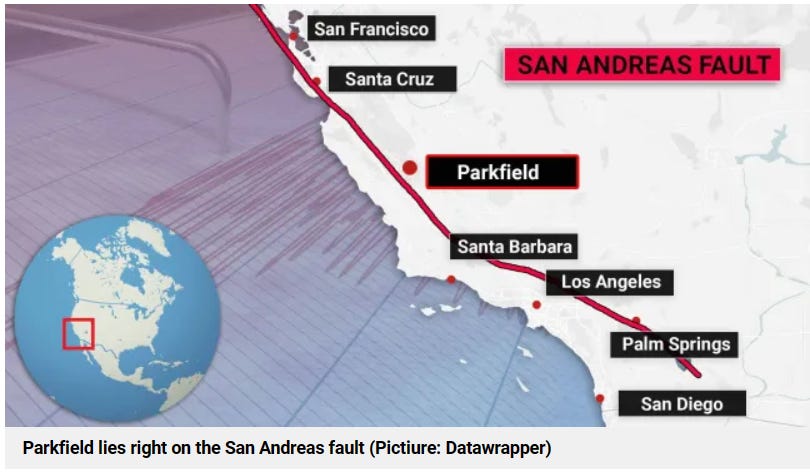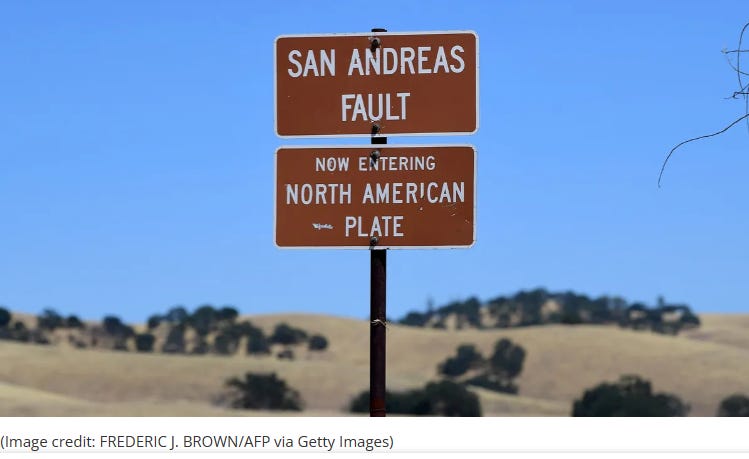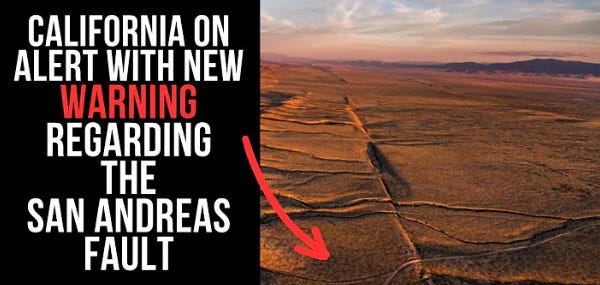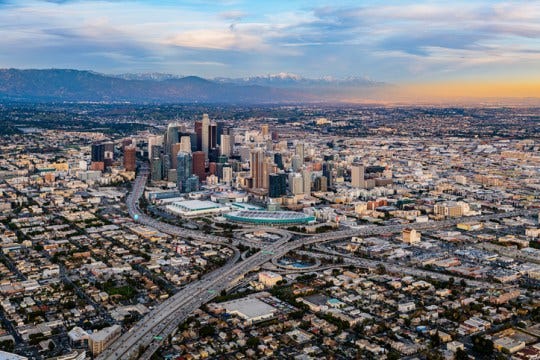California on alert as San Andreas fault hints at a quake
Rumblings point to impending San Andreas earthquake – is New Madrid next?
By Jen Mills
April 13, 2024
The tiny town of Parkfield in California has something unusual about it.
Scientists are always eagerly studying it, because it is right on top of the San Andreas fault and has been called the ‘earthquake capital of the world’.
The Parkfield section of the San Andreas fault is sending mixed messages before a time of expected increased seismic risk.
The famous Faultline running from north to south of the Golden State will soon be due for a tremor, and all eyes are on the town as the potential epicenter.
Measurements there are behaving a bit oddly, though, according to Luca Malagnini, the director of research at the National Institute of Geophysics and Volcanology in Italy.
He told Live Science that he suspects there will be a quake in the area at some point this year – but not necessarily at Parkfield.
At the moment, there are no telltale signs which could indicate cracks precipitating an imminent quake, according to a study published in the journal Frontiers in Earth Science last month.
Mr Malagnini said the variation in attenuation measurements has dropped very low since 2021, however, and that this happened before the last rupture there on September 28, 2004.
‘We are waiting,’ he said.

The faultline has so far been predictable as far as geology goes, generally experiencing an earthquake around every 22 years (so by that measure, it would next occur in 2026).
Years when the quake has been overdue are generally when another quake elsewhere on the fault has taken pressure off.
However, there has not been a similar pressure-relieving event this time, so scientists don’t expect it to be overdue.
Mr Malagnini’s study looked at seismic wave attenuation, which is how sound waves lose energy as they move and depends on the permeability of rock.
Given that cracks up to 1.5km can open up before a quake, the sound conduction quality of the rock changes in that time too.
‘However, the behavior of the attenuation parameter in the last few years seems substantially different from the one that characterised the years prior to the 2004 mainshock,’ the study says.
This means that ‘a few questions arise’, such as: Is there going to be a different epicentre of the next quake?
Is there a predictable pattern which is the same before each quake?
The point of the work is essentially to try to work out accurate ways of predicting earthquakes.
A ‘foretremor’ was detected in the days before the last Parkfield mainshock, immediately after a quiet period of around 120 days, which could give clues for the next time.
Parkfield is generally not bad as a place for the strongest tremors, as it is not a huge built-up city such as Los Angeles, which was depicted as having a mega earthquake in the 2015 film San Andreas.
Quakes near Parkfield tend to be around magnitude 6, which can damage property and potentially cause injuries.
The town is an important location for earthquakes because it is in a transitional zone, with the Faultline to the south locked.
This means the Pacific Plate and North American tectonic plates on either side of the line do not move against one another.
North of Parkfield, the plates move freely and generally at a rate of 3.6cm per year.
Given that the fault on California’s west coast runs close to cities including LA, San Diego and San Francisco, a big quake could have a major impact.
READ MORE:
“The San Andreas Crack Is About to Cause the Biggest Tsunami in History!”
California and Nevada were rocked by 945 earthquakes in 7 days.







